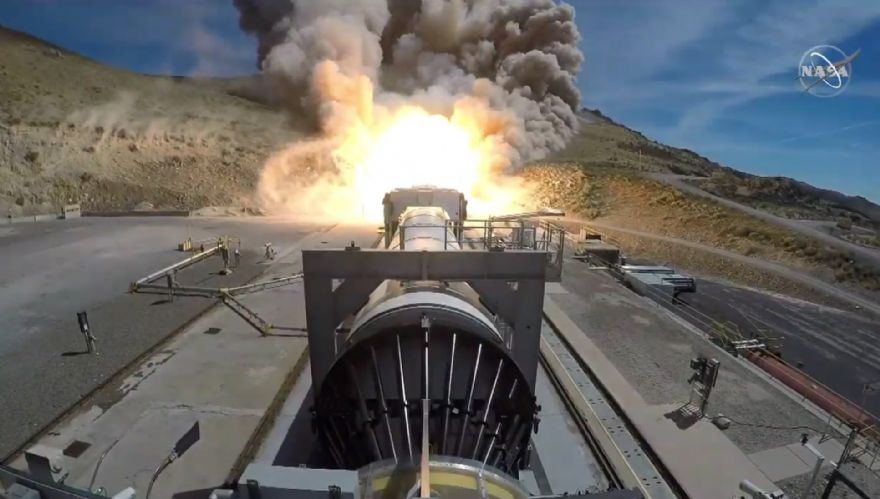 NASA
NASA and
Northrop Grumman Corp have successfully conducted a full-scale static fire test of NASA’s Space Launch System (SLS) rocket motor, known as Flight Support Booster (FSB-1), in Promontory — an area of high ground in the American state of Utah.
During the test, the 154ft-long five-segment rocket motor fired for just over 2min, producing 3.6 million pounds of thrust. Two SLS boosters will provide more than 75% of the initial thrust for an SLS launch.
Charlie Precourt, Northrop Grumman’s vice president of propulsion systems, said: “NASA’s Artemis missions, powered by Northrop Grumman boosters, will push the boundaries of what is possible for human exploration in space.
“We have built, qualified and delivered flight hardware for Artemis I, and we are committed to the continuous improvement and testing of our products to provide the best solid-propulsion to fuel NASA’s missions to the moon and beyond.”
The company developed this motor based on the flight-proven design of the space shuttle boosters, but with enhanced technologies and updated materials to provide NASA’s most powerful rocket to date.
The new five-segment booster configuration provides 20% greater average thrust than the shuttle boosters, enabling the SLS rocket to deliver greater mass and volume “by generating greater departure energy than any existing launch vehicle.
Northrop Grumman has delivered the first set of rocket motor segments for Artemis I boosters. The second set of motors for the Artemis II boosters are nearly complete, and rocket motor segments for Artemis III are in production. Materials evaluated in this latest test could be used in missions following Artemis III.
From the first lunar lander to the space shuttle boosters, to supplying the International Space Station with vital cargo, Northrop Grumman has pioneered new products and ideas that have been put into orbit, on the moon, and in deep space for more than 50 years.
As a major contributor to NASA’s Artemis programme, the company is “building on its mission heritage with new innovations to enable NASA to return humans to the moon, with the ultimate goal of human exploration of Mars.”